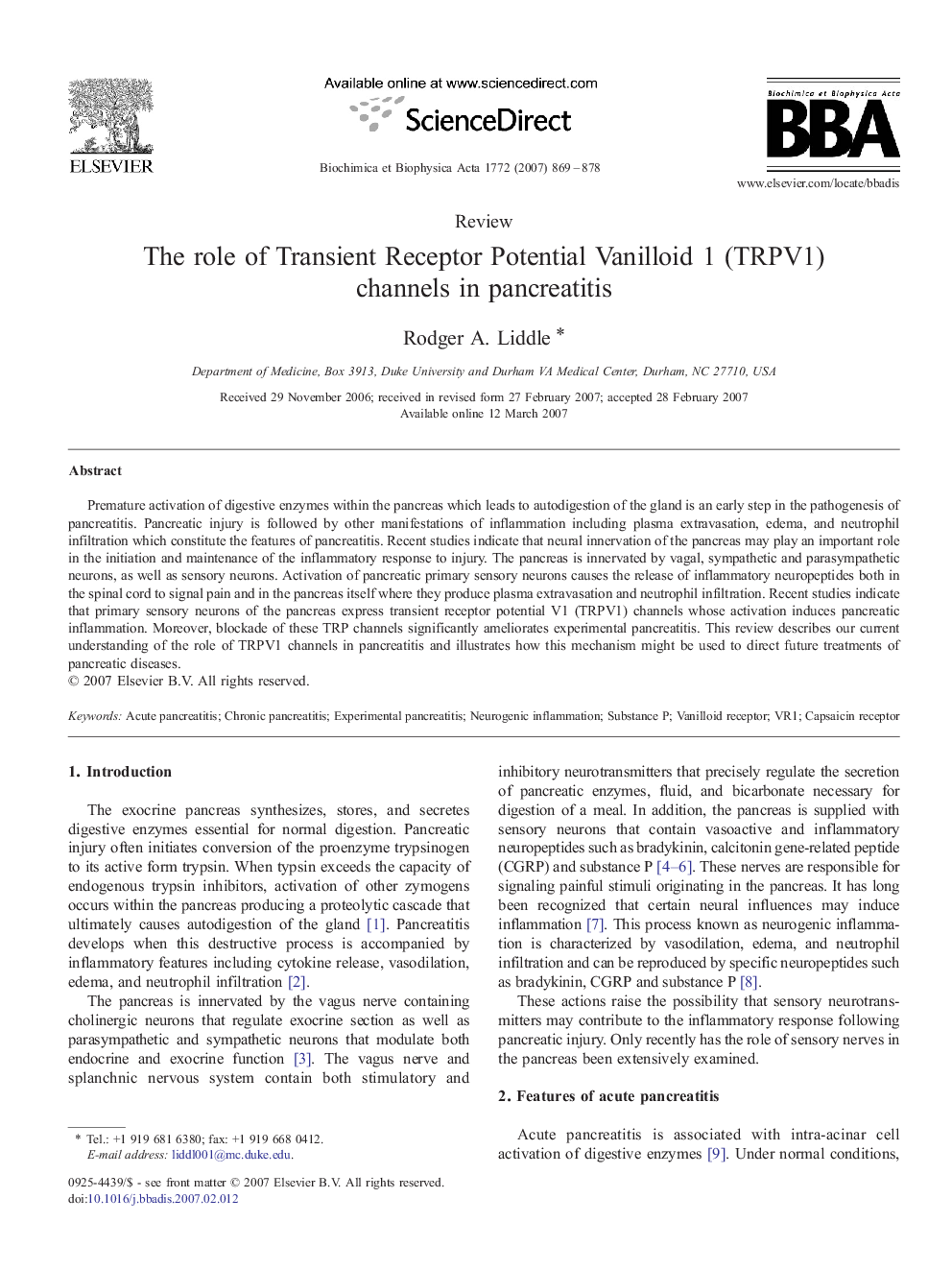| Article ID | Journal | Published Year | Pages | File Type |
|---|---|---|---|---|
| 1905782 | Biochimica et Biophysica Acta (BBA) - Molecular Basis of Disease | 2007 | 10 Pages |
Premature activation of digestive enzymes within the pancreas which leads to autodigestion of the gland is an early step in the pathogenesis of pancreatitis. Pancreatic injury is followed by other manifestations of inflammation including plasma extravasation, edema, and neutrophil infiltration which constitute the features of pancreatitis. Recent studies indicate that neural innervation of the pancreas may play an important role in the initiation and maintenance of the inflammatory response to injury. The pancreas is innervated by vagal, sympathetic and parasympathetic neurons, as well as sensory neurons. Activation of pancreatic primary sensory neurons causes the release of inflammatory neuropeptides both in the spinal cord to signal pain and in the pancreas itself where they produce plasma extravasation and neutrophil infiltration. Recent studies indicate that primary sensory neurons of the pancreas express transient receptor potential V1 (TRPV1) channels whose activation induces pancreatic inflammation. Moreover, blockade of these TRP channels significantly ameliorates experimental pancreatitis. This review describes our current understanding of the role of TRPV1 channels in pancreatitis and illustrates how this mechanism might be used to direct future treatments of pancreatic diseases.
